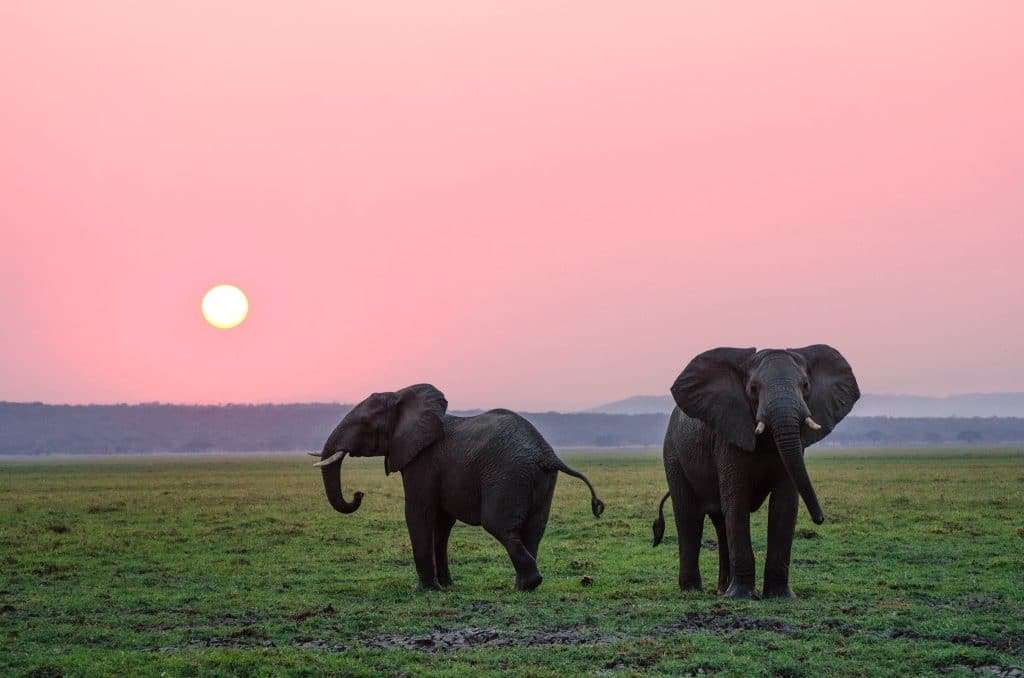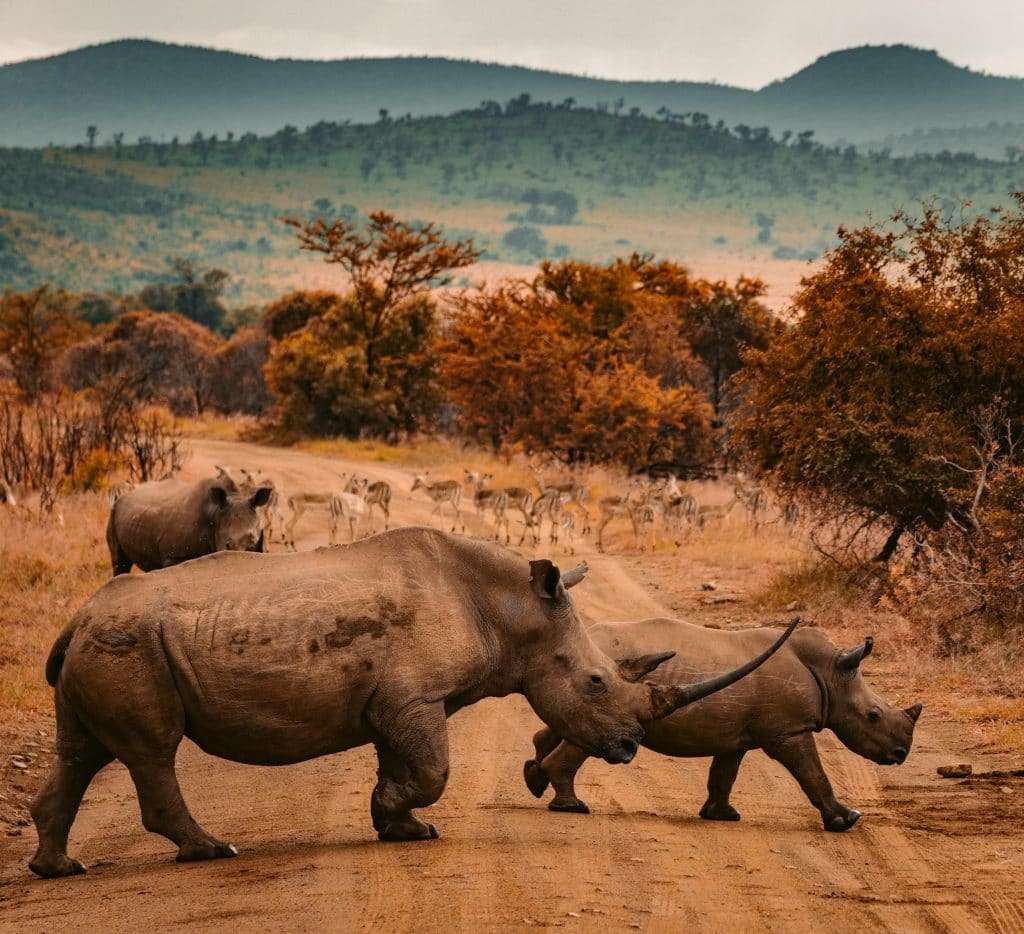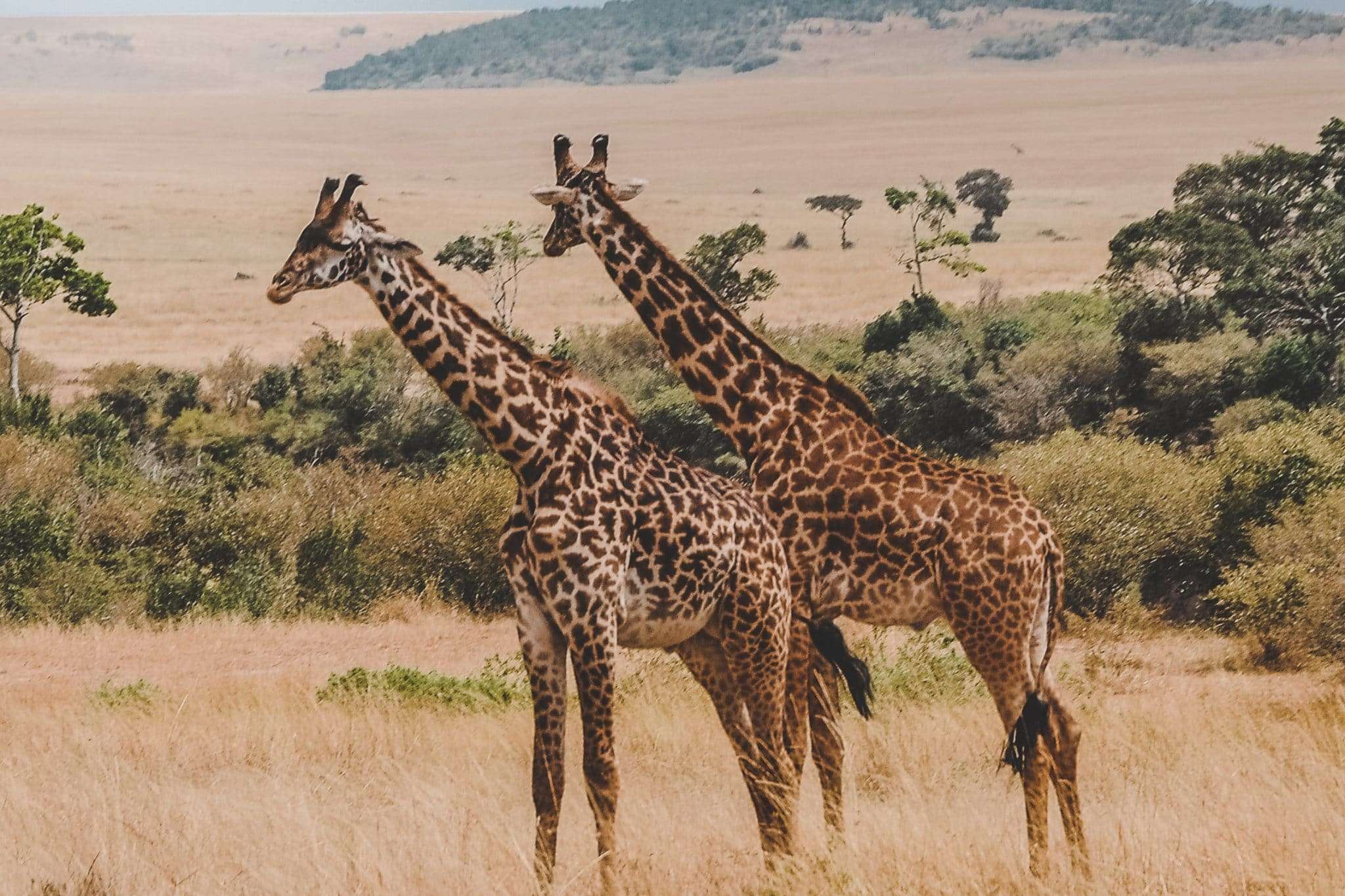The roles of large mammals have been overlooked in the fight against climate change, new research finds.
If you’re looking for reasons to protect endangered species, particularly large mammals, there’s no shortage. They play crucial roles in their ecosystems, they’re intelligent, nurturing, and communal, and they enjoy a rich history of capturing human imagination—after all, who wants to live on a planet without elephants or giraffes?
Now, there’s even more reason to protect a number of large mammal species. According to new research, they could play a significant role in mitigating climate change.
The new research, commissioned by wildlife charity Tusk, was published in the recent issue of journal Current Biology. It looks at how large mammals, including elephants, rhinoceroses, giraffes, whales, bison, and moose, impact the effects of climate change.
Mitigating climate change is often coupled with planting trees and reforestation projects, but according to the new findings, those forested areas need animals more than previously thought.
Animals and climate change
“Conservation efforts usually focus on either trees and carbon or the broad conservation appeal of large mammals,” Professor Yadvinder Malhi, Environmental Change Institute at the University of Oxford, and researcher for the study, said in a statement. “This study looked at whether it was possible to align these agendas—under what context could protecting and restoring large animal wildlife help us tackle and adapt to climate change.”
According to the findings, the large grazing animals disperse seeds, clear vegetation, and fertilize soil. This builds ecosystem resiliency and helps the soil and above-ground plants sequester carbon more efficiently. It’s a critical function, particularly as new findings show the largest terrestrial carbon sink, the Amazon rainforest, is in jeopardy of turning into a savanna.

Animal agriculture, logging, and fires have ravaged the world’s largest tropical rainforest. Last year saw CO2 emissions from global wildfires hit a record high. These wildfires release carbon that’s stored in trees and other vegetation, adding to the greenhouse gases in the environment.
Large mammals can reduce the wildfire risk by their activities on woody vegetation that fuels many of these fires, the researchers say. Their grazing and trampling can also create firebreaks. Large mammals are also able to open habitats to reflect more solar radiation back into the atmosphere and cooling the planet, the researchers found.
“Animals can also help with localized adaptation to climate change in these environments by diversifying vegetation and increasing habitat heterogeneity,” Dr. Tonya Lander, Department of Plant Sciences at Oxford University said. “Diversity of species and microhabitats can make the ecosystem as a whole more able to resist climate change, return to a stable state following a climate-related disturbance, or find a new stable state that functions within the changed and changing climate.”
Endangered species
But many of these species are threatened or endangered, particularly rhinoceroses. There are just two white rhinoceroses left in the wild, both females. Scientists have recently artificially inseminated the cows in hopes of producing offspring. Rhinoceroses are historically difficult to impregnate and can often have complications when they do conceive.
“In the very early days our institute started to collect samples from different species and store them in liquid nitrogen. The idea was maybe we could use the material in the future. It turns out, year by year, more species are going down the road to extinction and those databases are becoming more and more important,” Steven Seet, a member of BioRescue’s project management and Head of Science Communication, told Syfy Wire. BioRescue, an international consortium of scientists and conservationists is behind the recent rhino insemination project.
Last March, the International Union for the Conservation of Nature (IUCN) moved African forest elephants onto its Critically Endangered list and moved the African savanna elephant onto the Endangered list. Prior to the announcement, all African elephants were considered one species. It marked the first time two species were assessed separately for the IUCN Red List, following the emergence of new genetic evidence.

Rhinoceroses and elephants are both targeted by poachers for their tusks that still fetch high prices despite an increase in the number of laws banning the import and sale of ivory around the world. Some efforts have involved proactively removing the horns and tusks to prevent poaching. A study published last October found some elephants in Mozambique have evolved to stop producing tusks after years of aggressive poaching wiped out 90 percent of the regional population.
In the new study, researchers pinpointed three key areas where large mammals may be most beneficial in fighting climate change: carbon stocks, reflecting solar radiation (called “albedo”), and decreasing the severity of wildfires.
Large mammals play a crucial role in oceans, too. The researchers noted that whales fertilize phytoplankton. It plays a key role in carbon sequestration, capturing more than 37 billion tons of CO2 every year.
“The report also highlights where there are gaps in our knowledge,” Malhi said, “such as in our understanding of soils and the deep oceans, where more research may identify new opportunities for both restoring large animal wildlife and tackling climate change.”


